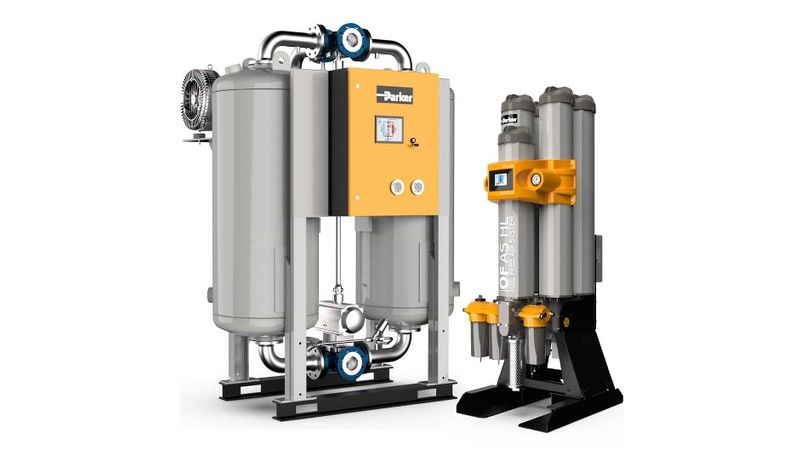Adsorption dryers
Dry compressed air using Parker's adsorption dryer
Part description
How does an adsorption dryer work?
An adsorption dryer is a type of air dryer that removes moisture from compressed air using the Pressure Swing Adsorption (PSA) principle. The PSA principle is the process in which water molecules from the compressed air attach to the desiccant (activated alumina), the adsorption pellet.
What dew point can an adsorption dryer reach?
Depending on the residence time in the columns, a dew point of >-70°F (-56°C) can be achieved.
Applications of adsorption dryers
Adsorption dryers are used in many different industries, depending on the quality requirements of various processes. For example, in the food industry, an adsorption dryer is definitely used.
- Food Industry: The quality requirements for compressed air according to ISO8573-1:2010 in this industry start with a minimum dew point of -20°F (-29°C), but often are even higher, which can only be achieved with an adsorption dryer. The requirement ensures that no mold or bacteria growth occurs due to the moisture content in the compressed air, extending the shelf life of products and preventing corrosion in pipelines.
Benefits of an adsorption dryer
There are several benefits to using adsorption dryers, such as:
- Effective drying: Adsorption dryers are highly effective in removing moisture from compressed air.
- Durability: With annual maintenance of the Parker adsorption dryer, its lifespan is a minimum of ten years.
No-obligation advice on adsorption dryers?
Contact us for more information or a no-obligation consultation with our compressed air & gas specialist, Patrizia Callenbach at +31 (0)6 57 42 00 91.
View Product Catalog: Compressed Air & Gas Treatment
 EN
EN
 NL
NL PL
PL 

